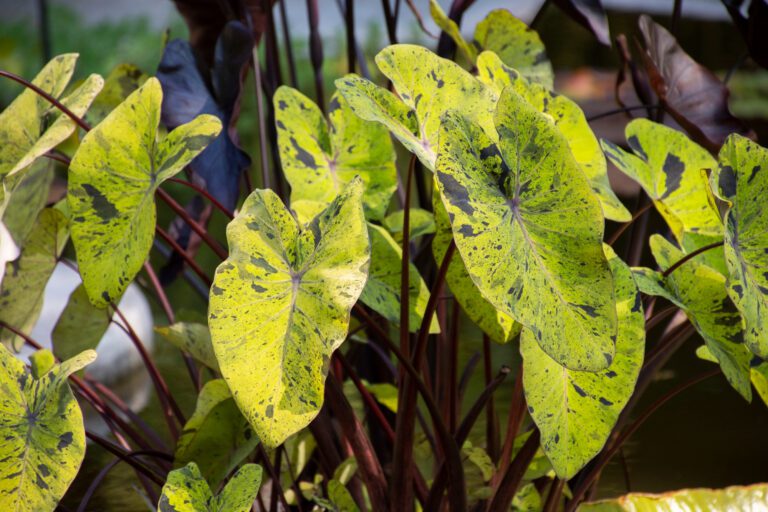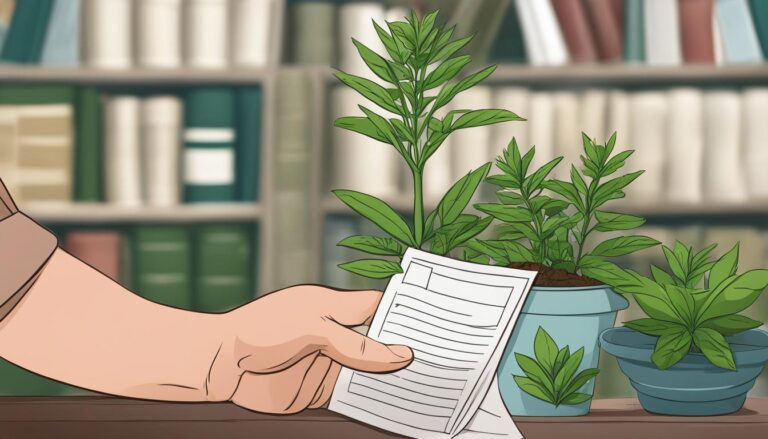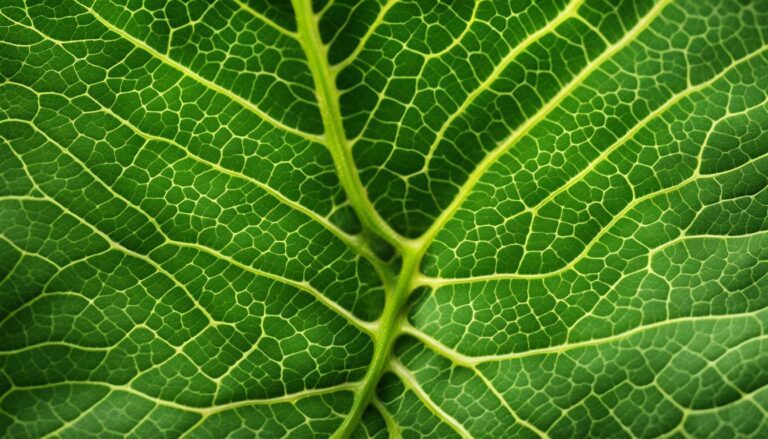
When exploring the great outdoors, it’s fascinating to discover the medicinal plants that grow in the wild. But how can you identify which plants have medicinal properties?
In this article, I’ll share some tips and resources to help you on your journey to identifying medicinal plants in the wild.
Key Takeaways:
- Carry a plant identification book or use your smartphone for research.
- Not all wild plants are edible or medicinal, so caution is advised.
- Proper identification ensures gathering the correct plant for medicinal use.
- Online resources and plant identification groups can provide assistance.
- Consult with an herbalist or botanist for professional guidance.
The Importance of Wild Plant Identification
Proper identification of wild plants is crucial for various reasons. Firstly, it ensures that you are gathering the correct plant for your intended purpose, whether it’s for medicinal use or foraging for food.
Also, it helps you avoid potentially dangerous look-alike plants that may have harmful effects. Using a reliable plant identification guide or app can provide you with the necessary information to confidently identify and utilize wild plants.
When it comes to wild plant foraging, accurate identification is essential for safety and well-being. Consuming the wrong plant can lead to adverse reactions or even poisoning.
By properly identifying plants, you can distinguish between edible and toxic species, allowing you to forage for nutritious and safe food sources in the wild. A comprehensive wild plant identification guide can provide visual cues, descriptions, and detailed information on toxic plants to help you make informed decisions.
Furthermore, wild plant identification is important for the preservation of natural habitats and ecosystems. By correctly identifying plants in the wild, you can ensure that you are not disrupting or damaging endangered or protected plant species.
Understanding the biodiversity of different regions and the unique plant species that exist in each area allows us to appreciate and conserve these natural resources for future generations.
The Importance of Proper Identification
Proper identification of wild plants is not only crucial for personal safety and ethical foraging practices but also plays a significant role in biodiversity preservation and conservation efforts.
It empowers individuals to make informed decisions about the plants they encounter, ensuring they are using the correct species for medicinal purposes or responsibly foraging for food.
Examples of Wild Plant Identification Resources
| Plant Identification Books | Online Resources | Mobile Apps |
|---|---|---|
| “Florida’s Edible Wild Plants” by Peggy Sias Lantz | Plant identification websites | PlantSnap |
| “Foraging the Rocky Mountains” by Lizbeth Morgan | Botanical communities | iNaturalist |
| “Identifying and Harvesting Edible and Medicinal Plants in Wild (and Not So Wild) Places” by Steve Brill and Evelyn Dean | Botanical field guides | Seek |
There are various resources available, such as plant identification books, online platforms, and mobile apps, that can assist you in accurately identifying wild plants.
These resources provide valuable information on plant characteristics, growth patterns, and usage, helping you make informed decisions when encountering plants in the wild.
Medicinal Plants in Different Regions
When it comes to identifying medicinal plants in the wild, the type of plants you can find varies based on the region you are exploring. Different regions have their own unique flora and ecosystems, which means that the plants you encounter in one area may not be found in another.
It’s important to be aware of the specific plants that are native to the region you are in and understand their medicinal properties.
In Florida, for example, you may come across native medicinals like Spanish needle and passionflower. These plants have been traditionally used for their medicinal properties and are often found in the wild.
On the other hand, if you are exploring the Rocky Mountains, you can find wild medicinal species such as prickly pears, which have been used by Native American cultures for centuries.
To properly identify medicinal plants in different regions, it’s important to use resources that are specific to the area you are exploring. Field guides and online resources that focus on the plants of a particular region can provide valuable information on plant identification.
These resources often include detailed descriptions, photographs, and information on the medicinal properties of the plants, helping you to confidently identify and utilize wild plants for their medicinal benefits.
Region-specific Medicinal Plants
| Region | Common Medicinal Plants |
|---|---|
| Florida | Spanish needle, passionflower |
| Rocky Mountains | Prickly pears |
| Pacific Northwest | Oregon grape, stinging nettle |
| Southwest | Yucca, desert marigold |
| Appalachian Mountains | Ginseng, goldenseal |
By understanding the medicinal plants that are native to different regions, you can expand your knowledge of wild plant species and their potential benefits. Whether you are an avid hiker, forager, or nature enthusiast, exploring the diverse world of medicinal plants in different regions can be a rewarding and educational experience.
The Benefits of Medicinal Plant Identification Books
When it comes to identifying medicinal plants, having a reliable reference book is invaluable. Medicinal plant identification books provide comprehensive information on various species, allowing you to confidently recognize and learn about the plants you encounter in the wild.
These books are essential resources for hikers, foragers, and nature enthusiasts, enabling them to expand their knowledge of medicinal plants and their applications.
One of the key advantages of using plant identification books is the detailed descriptions they offer. These descriptions often include information such as plant morphology, habitat preferences, and flowering periods, helping you accurately identify the plant species you come across.
These books usually feature high-quality photographs or illustrations that further aid in the identification process, allowing you to compare the plants you find with the visuals provided.
Another significant benefit of medicinal plant identification books is the wealth of information they provide on the medicinal properties and uses of the plants.
These books delve into the therapeutic benefits of each species, detailing the active compounds and their effects on the body. By consulting these references, you can gain a deeper understanding of the healing potential of the plants and make informed decisions about their applications.
Comparison of Popular Medicinal Plant Identification Books
| Book Title | Author | Description |
|---|---|---|
| Florida’s Edible Wild Plants | Peggy Sias Lantz | A comprehensive guide to identifying edible and medicinal plants in Florida. |
| Foraging the Rocky Mountains | Lizbeth Morgan | An in-depth exploration of foraging for edible and medicinal plants in the Rocky Mountains region. |
| Identifying and Harvesting Edible and Medicinal Plants in Wild (and Not So Wild) Places | Steve Brill and Evelyn Dean | A comprehensive field guide covering a wide range of edible and medicinal plants in various habitats. |
| Medicinal Plants of the American Southwest | Charles W. Kane | A specialized guide to medicinal plants found in the American Southwest region. |
| Medicinal Plants of the Pacific West | Michael Moore | A detailed resource for identifying and learning about medicinal plants in the Pacific West region. |
| Northeast Foraging | Leda Meredith | An exploration of wild edible and medicinal plants in the Northeastern United States. |
| Peterson Field Guide to Medicinal Plants | Steven Foster and James A. Duke | A comprehensive field guide featuring over 500 species of medicinal plants across North America. |
With the extensive information and visual aids provided by plant identification books, you can confidently identify medicinal plants in the wild and expand your knowledge of their properties and uses.
These resources are essential companions for anyone interested in exploring the world of medicinal plants and harnessing their healing potential.

Online Plant Identification Resources
In today’s digital age, online resources have become increasingly popular for identifying medicinal plants in the wild. These resources provide a convenient and accessible way to quickly identify plants while out in the field.
Whether you’re a seasoned forager or a novice plant enthusiast, online plant identification websites and apps can be valuable tools in your quest to identify medicinal plants.
COMING SOON! We are currently working on developing our own plant identification tool to help our readers identify their indoor plants as well as plants they find in the wild
Plant identification websites, such as PlantNet and iNaturalist, allow users to upload photos of plants and receive community assistance in identifying them.
These platforms have a vast network of knowledgeable individuals who are passionate about botany and willing to help with plant identification. By sharing high-quality photos and providing relevant details about the plant, users can usually receive accurate identifications in a relatively short amount of time.
Plant identification apps, such as PictureThis and PlantSnap, utilize image recognition technology to identify plants based on photos taken with a smartphone. These apps employ sophisticated algorithms that analyze the characteristics of the plant and match them with a comprehensive plant database.
With just a few taps, users can receive instant plant identifications, making it easier than ever to identify medicinal plants on the go.
Comparison of Online Plant Identification Resources
| Website/App | Key Features | Availability |
|---|---|---|
| PlantNet | – Community identification – Global plant database – Offline mode | Website and mobile app (iOS, Android) |
| iNaturalist | – Community identification – Large user base – Worldwide coverage | Website and mobile app (iOS, Android) |
| PictureThis | – Instant plant identification – Plant care tips – Plant encyclopedia | Mobile app (iOS, Android) |
| PlantSnap | – AI-powered identification – Offline mode – Plant database updates | Mobile app (iOS, Android) |
These online plant identification resources offer a wealth of information and convenience for plant enthusiasts. Whether you prefer community-driven identification or instant AI-powered recognition, there’s an online resource that suits your needs.
So the next time you come across a mysterious plant in the wild, don’t hesitate to turn to these online platforms for assistance in identifying medicinal plants.
Ethical Considerations in Wild Plant Foraging
When foraging for wild medicinal plants, ethical considerations should guide our actions to ensure sustainable practices and the preservation of plant populations. By following ethical guidelines, we can minimize our impact on the environment and contribute to the long-term health of plant species.
Practicing Sustainable Wild Harvesting
One of the core principles of ethical wild plant collection is practicing sustainable harvesting. This means only taking a small portion of the plant population, ensuring enough plants remain to reproduce and maintain a healthy population.
It’s important to understand the life cycle and growth patterns of the plants you’re harvesting, as well as any specific vulnerabilities they may have.
To promote sustainability, it’s recommended to harvest mature plants that have already dispersed their seeds or reproduce asexually through methods like root division. This helps ensure the continued growth and propagation of the plant population.
Consulting the Species at Risk List
To further support ethical wild plant foraging, it’s essential to stay informed about plant species that are at risk. Organizations like United Plant Savers maintain a Species at Risk list, which identifies plants that are endangered, threatened, or at risk of being over-harvested. By consulting this list, foragers can avoid harvesting plants that are already in a vulnerable condition.
Regularly staying updated on the Species at Risk list can also help raise awareness about the conservation needs of specific plants and encourage efforts to protect and restore their populations.
| Guidelines for Ethical Wild Plant Collection | Benefits |
|---|---|
| Harvest only from abundant plant populations | Preserves genetic diversity and ensures the survival of the species |
| Observe laws and regulations | Protects plants from illegal harvesting and supports conservation efforts |
| Leave enough plants for natural regeneration | Allows plants to reproduce and maintain a healthy population |
| Take only what you need | Respects the ecological balance and ensures availability for others |
| Learn to identify invasive species | Helps protect native plant habitats from invasive species |
| Contribute to plant conservation efforts | Supports research, habitat restoration, and education initiatives |
By adhering to these ethical guidelines, foragers can play a crucial role in preserving and protecting wild plant populations for future generations. Sustainable wild harvesting practices ensure the continued availability of medicinal plants while minimizing our impact on the environment.
Seeking Assistance from Plant Identification Groups
In situations where you’re unable to identify a plant species accurately, there are online communities and social media groups that can provide assistance. Facebook groups like the Plant Identification Group have a large number of botany enthusiasts who are willing to help with plant identification.
By uploading photos and providing relevant details, you can usually receive a response with the correct species identification within a short period.
Botanical Community on Facebook
The Plant Identification Group on Facebook is a thriving community of plant enthusiasts and experts who are passionate about identifying various plant species.
This group serves as a valuable resource for individuals seeking assistance in identifying medicinal plants in the wild. The members of this group are knowledgeable and willing to share their expertise, making it an excellent platform for seeking identification help.
To receive accurate identification, it’s important to include clear, high-quality photos of the plant from different angles and provide any relevant information, such as location, habitat, and distinctive features.
These details help the community members make informed judgments and provide accurate identifications.
| Benefits of Seeking Assistance from Plant Identification Groups |
|---|
| Access to a diverse network of plant enthusiasts and experts. |
| Quick and accurate plant identification through crowd-sourcing. |
| Opportunity to learn from experienced botanists and gain valuable knowledge about plant identification. |
| Engagement in a supportive community that shares a common interest in plants and their identification. |
Whether you’re a beginner or an experienced forager, reaching out to plant identification groups can significantly enhance your knowledge and confidence in identifying medicinal plants.
These communities provide a collaborative and helpful environment, allowing you to interact with fellow enthusiasts and experts who share the same passion for plants.

Remember, while plant identification groups are a valuable resource, it’s important to cross-verify any identification results with reputable sources such as field guides or consult with professionals to ensure accuracy.
This precaution will help you gain a well-rounded understanding of the plant species you encounter and avoid any potential risks or misidentifications.
Importance of Proper Training and Consultation
When it comes to identifying and utilizing wild plants for medicinal purposes, proper training and consultation are of utmost importance. While plant identification resources such as books and online tools can be helpful, they cannot replace the expertise of a trained herbalist or botanist.
Consulting with these professionals ensures that you are correctly identifying and utilizing plant species that are safe and suitable for your specific needs.
Herbalists are well-versed in the medicinal properties and uses of various plants. They can provide personalized guidance on dosage, preparation methods, and potential interactions or contraindications.
By seeking their expertise, you can ensure that you are using medicinal plants in a way that maximizes their benefits and minimizes any potential risks.
Botanists, on the other hand, have a deep understanding of plant taxonomy and can provide invaluable guidance in plant identification.
They can help you differentiate between similar-looking plant species and identify any potential look-alike plants that may have harmful effects. Their expertise can help you avoid dangerous mistakes and ensure that you are gathering the correct plant for your intended purpose.
Consulting with Plant Identification Experts
In addition to herbalists and botanists, there are also plant identification experts who specialize in the identification of wild plants. These individuals have extensive knowledge and experience in identifying various plant species and can provide accurate identification even in complex cases.
Seeking assistance from plant identification experts can be particularly useful when you come across plants that are uncommon, rare, or difficult to identify. They can offer insights and guidance based on their expertise, helping you confidently identify and utilize wild plants for their medicinal properties.
Overall, the importance of proper training and consultation cannot be overstated when it comes to identifying and utilizing medicinal plants.
By working with herbalists, botanists, and plant identification experts, you can ensure that you are making informed decisions and maximizing the benefits of these valuable natural resources.
The Role of Technology in Plant Identification
Technology has revolutionized the field of plant identification, providing innovative solutions that make it easier than ever to identify and classify medicinal plants in the wild.
One of the most significant advancements in this area is the development of image recognition technology. With the help of artificial intelligence algorithms, these systems can analyze and identify plants based on photographs or real-time camera inputs.
Image recognition technology utilizes deep learning models and computer vision techniques to accurately classify plant species. By capturing an image of a plant and uploading it to a mobile application or online platform, users can receive instant identification results.
This digital plant identification method eliminates the need for manual identification processes and allows for quick and efficient identification while out in the field.
The use of technology in plant identification also extends to automated plant identification systems. These systems leverage image recognition algorithms to compare images of unknown plants to a vast database of known plant species.
By analyzing visual patterns, leaf structures, and other features, these systems can provide accurate identifications within seconds. Mobile applications equipped with automated plant identification capabilities have become popular tools for plant enthusiasts, hikers, and foragers.
| Advantages of Technology in Plant Identification | Disadvantages of Technology in Plant Identification |
|---|---|
|
|
Despite the numerous advantages of technology in plant identification, there are still challenges that need to be addressed. The diversity of plant species and variations in image quality can impact the accuracy of automated identification systems.
The availability of large and reliable training datasets is crucial for developing robust and accurate image recognition models. Ongoing research and development efforts are focused on improving the accuracy and reliability of these systems, paving the way for more effective plant identification in the future.

Future Prospects of Plant Identification Technology
The future of plant identification technology looks promising. With continued advancements in artificial intelligence and machine learning, we can expect more accurate and efficient plant identification systems.
These advancements will not only benefit individuals interested in identifying medicinal plants but also play a crucial role in biodiversity preservation and the conservation of endangered plant species.
Challenges in Automated Plant Identification
Automated plant identification systems have revolutionized the way we identify plants in the wild. However, despite their advancements, these systems still face certain challenges that affect their accuracy. One of the biggest challenges is the vast diversity of plant species.
With millions of plant species worldwide, it can be difficult for automated systems to accurately identify every single one. The algorithms used in these systems need to be trained on a wide range of plant species to improve their accuracy, but acquiring a large and reliable training dataset can be a complex and time-consuming task.
Another challenge is the variations in image quality. Different lighting conditions, camera angles, and image resolutions can impact the accuracy of automated plant identification systems.
A clear and high-quality image is crucial for accurate identification, but this is not always possible, especially when working in the field. The algorithms used in these systems need to be robust enough to handle variations in image quality and still provide accurate results.
Furthermore, the accuracy of automated plant identification systems can be affected by look-alike plants or plants that have similar features. Certain plant species may have similar leaf shapes or flower structures, making it challenging for automated systems to differentiate between them.
Ongoing research is focused on developing more sophisticated algorithms that can effectively identify subtle differences between similar species and improve the overall accuracy of automated plant identification.
Factors Affecting the Accuracy of Automated Plant Identification Systems:
- Diversity of plant species
- Variations in image quality
- Similarity between look-alike plant species
| Challenges | Impact on Accuracy |
|---|---|
| Diversity of plant species | Lower accuracy due to limited training data |
| Variations in image quality | Potential decrease in accuracy with poor image conditions |
| Similarity between look-alike plant species | Higher chances of misidentification |
Despite these challenges, automated plant identification systems continue to evolve and improve. Ongoing research and development efforts aim to enhance the accuracy and reliability of these systems by addressing these challenges.
As more advanced algorithms and larger training datasets become available, we can expect automated plant identification systems to become more accurate and capable of identifying a wider range of plant species.
These technological advancements will not only benefit individuals interested in identifying medicinal plants but also contribute to the preservation of biodiversity and the conservation of endangered plant species.
Real-Time Plant Identification Systems
Advancements in technology have led to the development of real-time plant identification systems, revolutionizing the way we identify medicinal plants in the wild.
With the help of efficient deep learning models and computer vision techniques, these systems offer instant plant identification through mobile applications.
By utilizing image processing and pattern recognition algorithms, users can capture an image of a plant and receive immediate results, making it easier and faster to identify wild plant species.
Real-time plant identification apps provide a convenient and user-friendly experience. They allow nature enthusiasts, hikers, and foragers to discover the medicinal properties and uses of various plant species while exploring the wilderness.
With just a few taps, users can access a vast database of plant information, including detailed descriptions, photographs, and medicinal properties. This empowers individuals to confidently identify and utilize wild plants for their intended purposes.
These cutting-edge identification systems have the potential to be a game-changer for both professionals and amateurs in the field of plant identification. They eliminate the need for time-consuming manual identification processes, offering a streamlined and efficient alternative.
Real-time plant identification technology opens up new possibilities for biodiversity preservation and the conservation of endangered plant species, as it enables individuals to quickly recognize and protect valuable plant resources.
| Advantages of Real-Time Plant Identification Systems | Limitations of Real-Time Plant Identification Systems |
|---|---|
|
|
Overall, real-time plant identification systems offer a promising solution for efficient and accurate identification of medicinal plants in the wild.
With further advancements in efficient deep learning models and image recognition technology, these systems will continue to evolve and improve. They empower individuals to explore and learn about the vast diversity of wild plant species, fostering a deeper understanding and appreciation of the natural world.
The Future of Plant Identification
In the coming years, advancements in technology will revolutionize the field of plant identification. With the integration of artificial intelligence (AI) and machine learning algorithms, we can expect more accurate and efficient plant identification systems.
These systems will utilize vast databases of plant images to train algorithms capable of recognizing and classifying plant species with remarkable precision.
These technological advancements will not only benefit individuals interested in identifying medicinal plants but also play a crucial role in biodiversity preservation.
By accurately identifying and cataloging plant species, we can better understand and appreciate the rich diversity of our natural world. This knowledge will aid in the conservation of endangered plant species, as well as contribute to the protection of ecosystems and the promotion of sustainable practices.
Furthermore, with the increasing availability of mobile applications and handheld devices, plant identification will become even more accessible to a wider audience.
These user-friendly apps equipped with real-time image recognition technology will enable instant plant identification in the field. Whether you’re a hiker, forager, or simply curious about the plants around you, these apps will provide a convenient and efficient means of plant identification.
As we look forward to the future of plant identification, it is clear that technology will continue to evolve and enhance our understanding of the natural world.
By harnessing the power of AI and machine learning, we can foster a deeper connection with nature while actively contributing to the preservation of our planet’s biodiversity.
FAQ
What resources can I use to identify medicinal plants in the wild?
You can use plant identification books or smartphone apps to help identify medicinal plants in the wild.
Are there specific plant identification books for medicinal plants?
Yes, some recommended plant identification books for medicinal plants include “Florida’s Edible Wild Plants” by Peggy Sias Lantz, “Foraging the Rocky Mountains” by Lizbeth Morgan, and “Identifying and Harvesting Edible and Medicinal Plants in Wild (and Not So Wild) Places” by Steve Brill and Evelyn Dean.
What are the benefits of properly identifying wild plants?
Proper identification of wild plants ensures that you gather the correct plant for your intended purpose and helps you avoid potentially dangerous look-alike plants.
What types of medicinal plants can be found in the wild?
The types of medicinal plants found in the wild vary based on the region. For example, in Florida, you may find Spanish needle and passionflower, while in the Rocky Mountains, you can find prickly pears.
How can medicinal plant identification books be helpful?
Medicinal plant identification books provide detailed descriptions, photographs, and information on the medicinal properties and uses of plants. They serve as valuable references for identifying and learning about various plant species.
Are there online resources available for identifying medicinal plants?
Yes, there are websites and smartphone apps that allow users to upload photos for community identification or utilize image recognition technology to identify plants.
What ethical considerations should I keep in mind when foraging for wild plants?
It’s important to practice sustainable harvesting methods, such as only taking a small portion of the plant and staying informed about endangered plant species.
Where can I seek assistance if I’m unable to identify a plant species?
Online communities and social media groups, such as the Plant Identification Group on Facebook, can provide assistance with plant identification.
Is it necessary to consult with professionals when using wild plants for medicinal purposes?
Yes, consulting with an herbalist or botanist is important to ensure that you’re correctly identifying and utilizing safe plant species for your specific needs.
How do real-time plant identification systems work?
Real-time plant identification systems use deep learning models and image processing algorithms to classify plant species based on captured images, providing instant identification through mobile applications.
What are the challenges in automated plant identification?
Challenges in automated plant identification include the diversity of plant species, variations in image quality, and the need for large and reliable training datasets, which can impact the accuracy of these systems.
What does the future hold for plant identification?
The future of plant identification looks promising with advancements in AI and machine learning, which will lead to more accurate and efficient plant identification systems, benefiting biodiversity preservation and endangered plant species conservation.







2 Comments
Comments are closed.